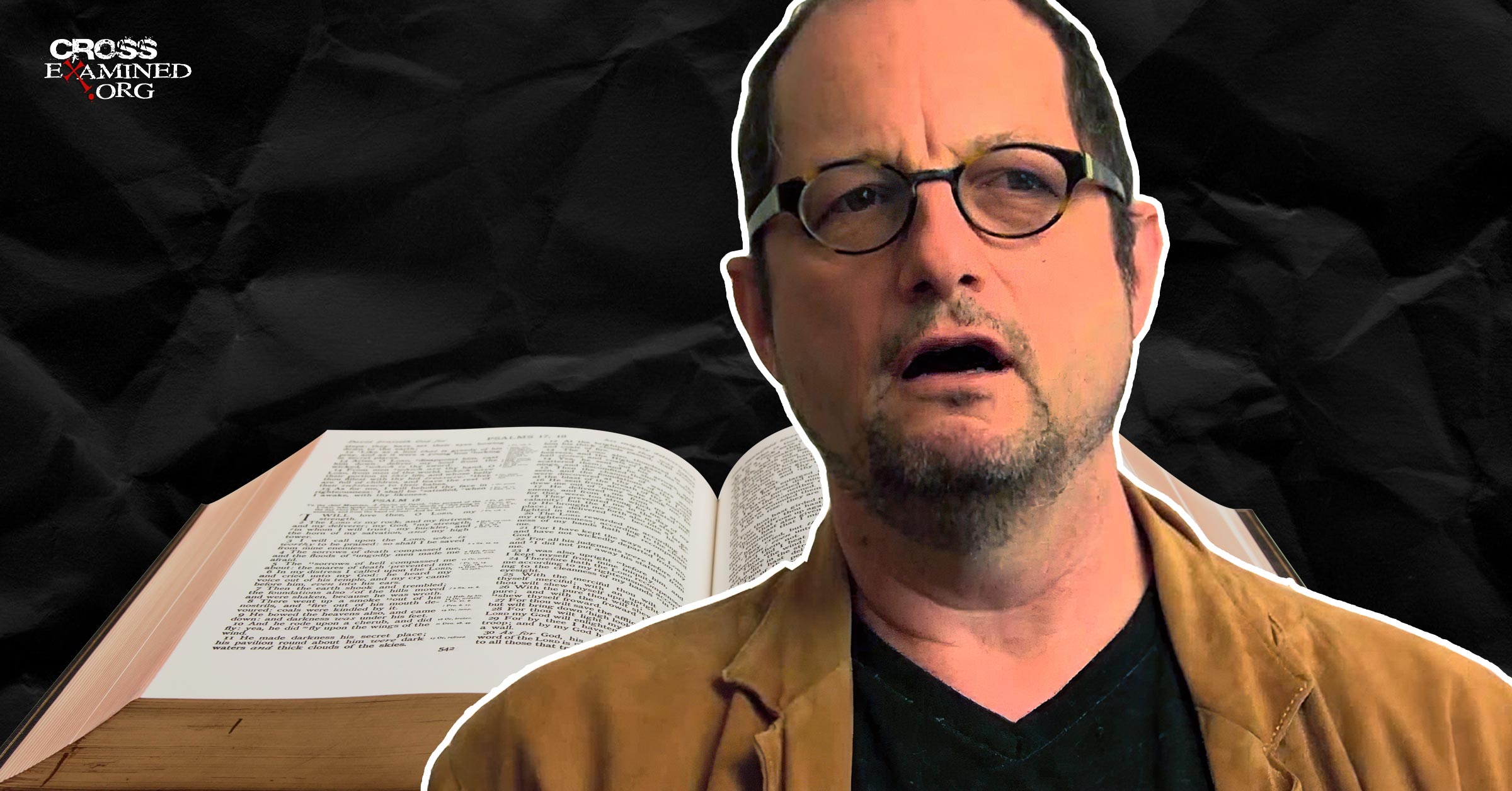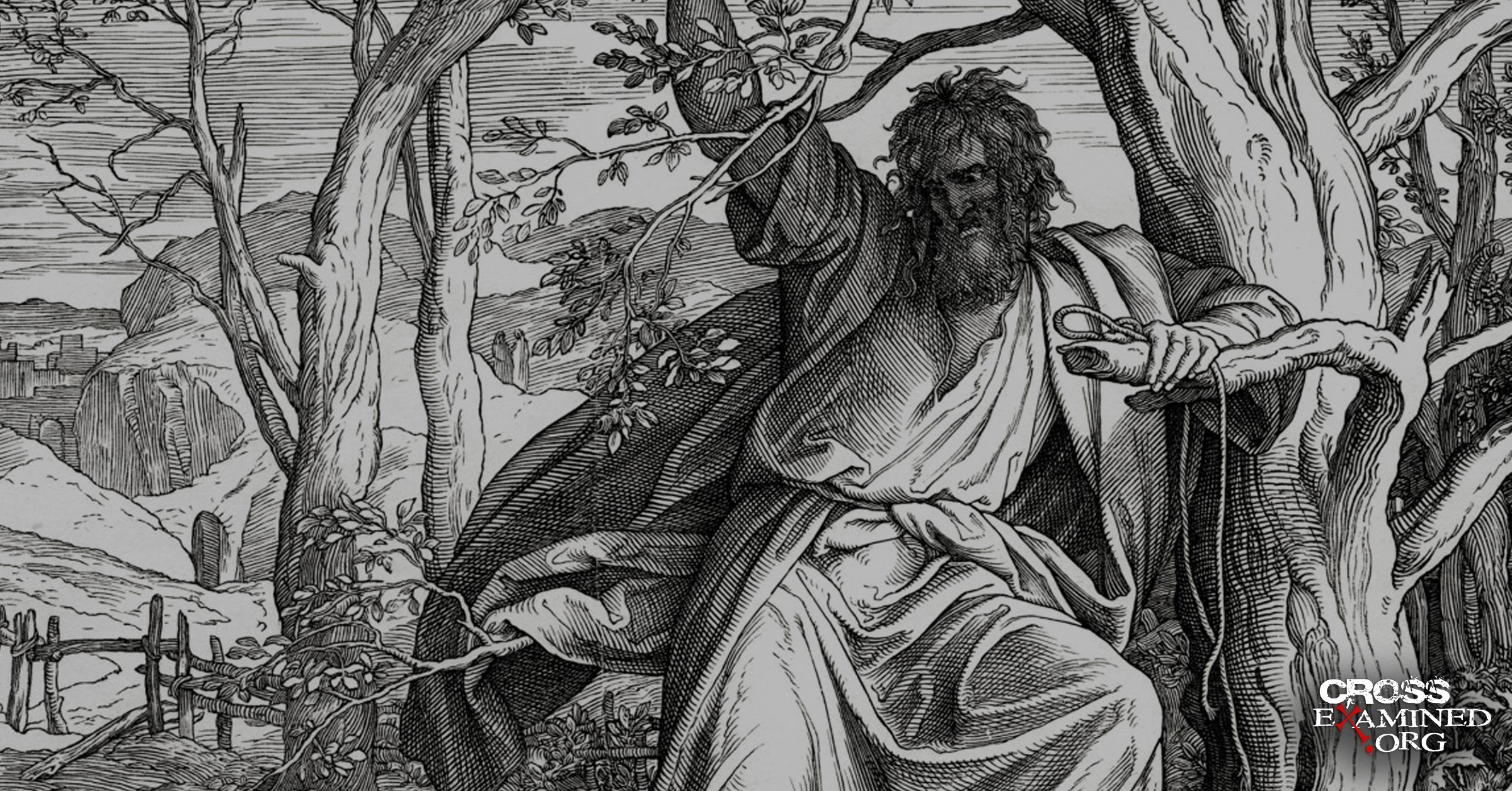Skeptics say that the gospels are riddled with contradictions and therefore are not reliable historical sources. And these same skeptics say that some of these contradictions are downright absurd. For example, agnostic NT scholar Bart Ehrman points out one of his favorite Bible contradictions in his book best-selling book, Jesus, Interrupted.
One of my favorite apparent discrepancies—I read John for years without realizing how strange this one is—comes in Jesus’ “Farewell Discourse,” the last address that Jesus delivers to his disciples, at his last meal with them, which takes up all of chapters 13 to 17 in the Gospel according to John. In John 13:36, Peter says to Jesus, “Lord, where are you going?” A few verses later Thomas says, “Lord, we do not know where you are going” (John 14:5). And then, a few minutes later, at the same meal, Jesus upbraids his disciples, saying, “Now I am going to the one who sent me, yet none of you asks me, ‘Where are you going?’” (John 16:5). Either Jesus had a very short attention span or there is something strange going on with the sources for these chapters, creating an odd kind of disconnect.
Jesus, Interrupted, pp. 9
So there you have it. Either Jesus or John were having a ‘brain fart’. Take your pick.
Did Jesus Or John Have A Painfully Short Attention Span?
If you look at the Bible in a wooden fashion, this contradiction does seem to be absurd on the face of it. So how should we understand this so-called discrepancy?
It seems to me that the writer of John is dealing with the disciples’ immediate reaction to Jesus’ words. The thought of him leaving fills them with sorrow, but if they had asked where he was going and grasped that it was to the Father, they would have recognized it was for Jesus’ advantage and theirs. Just look at the next verse: “But because I have said these things to you, sorrow has filled your heart. Nevertheless, I tell you the truth: it is to your advantage that I go away, for if I do not go away, the Helper will not come to you.” (Jn 16:6-7)
Looking back at the previous times Jesus was questioned that Ehrman points out, Peter had a bit of a bodyguard complex and didn’t want to hear about Jesus taking off by himself. So when he asks the question in John 13:36 about where Jesus is going, he doesn’t get it.
And in John 14:1-5, Jesus talks about going to his Father to prepare places for them. Thomas asks a question, but it’s because he’s not picking up what Jesus is laying down. He doesn’t ask what Jesus means by any of these things. And we know Thomas is a bit slow on the uptake, as we find out later in John’s Gospel. Thomas and Peter were both thinking naturally.
The Disciples’ Silence Became Deafening
We see that Jesus is disrupted with another question in John 14 but isn’t asked another question in John 15. Jesus so far has mentioned his departure, but then in John 15:22-16:4, he talks about persecution headed their way. You know, some heavy stuff. Now their hearts are sorrowful. They fall silent with sadness after being so inquisitive earlier.
It’s at 16:5 that Jesus is saying, “guys…you still don’t get it. You went quiet on me with all these hard sayings of persecution and me leaving. But I’m not leaving you alone. I’m sending the Spirit in my place. Now is the time to be asking questions again, but this time let’s be a little sharper and ditch the gloomy pessimism.”
After this, they interrupt Jesus again twice more in John 16, showing they still don’t understand what he’s talking about. Read John 16:17-19:
So some of his disciples said to one another, “What is this that he says to us, ‘A little while, and you will not see me, and again a little while, and you will see me’; and, ‘because I am going to the Father’?” So they were saying, “What does he mean by ‘a little while’? We do not know what he is talking about.” Jesus knew that they wanted to ask him, so he said to them, “Is this what you are asking yourselves, what I meant by saying, ‘A little while and you will not see me, and again a little while and you will see me’?
The Disciples Finally Get It, But Does Ehrman?
Jesus then answers their questions, and finishes by saying “I came from the Father and have come into the world, and now I am leaving the world and going to the Father.”
The light bulb finally seems to turn on. They quit looking at earthly things and start to see the spiritual realities Jesus is talking about. In John 16:28-30 the disciples exclaim, his disciples said, “Ah, now you are speaking plainly and not using figurative speech! Now we know that you know all things and do not need anyone to question you; this is why we believe that you came from God.” Jesus answered them, “Do you now believe?“
The metaphors are over in their minds. Jesus is now speaking clearly. They fell silent after some heavy sayings from Jesus, but now it’s dawning on them after Jesus prompts them to probe further. This interpretation doesn’t just come from me but is also supported by commentators and exegetes like CK Barrett, RCH Lenski, Craig Blomberg, John Gill, Christian Kuinoel, and Hermann Olshausen.
Only when we leave no room for conversational nuance would we have to conclude Jesus had a mental lapse or that something strange is going on with the writer of John. It seems like Bart’s reading is pretty wooden, and dare I say, fundamentalist. Many of his examples of alleged discrepancies in Jesus, Interrupted that are much more worth investigating and wrestling with. But this isn’t a golden moment for Ehrman here. And unfortunately, there are more bad ones like this. There’s nothing all that strange here.
Recommended resources related to the topic:
The New Testament: Too Embarrassing to Be False by Frank Turek (DVD, Mp3, and Mp4)
Why We Know the New Testament Writers Told the Truth by Frank Turek (DVD, Mp3 and Mp4)
Erik Manning is a Reasonable Faith Chapter Director located in Cedar Rapids, Iowa. He’s a former freelance baseball writer and the co-owner of a vintage and handmade decor business with his wife, Dawn. He is passionate about the intersection of apologetics and evangelism.
Original Blog Source: https://bit.ly/3jRu92R




